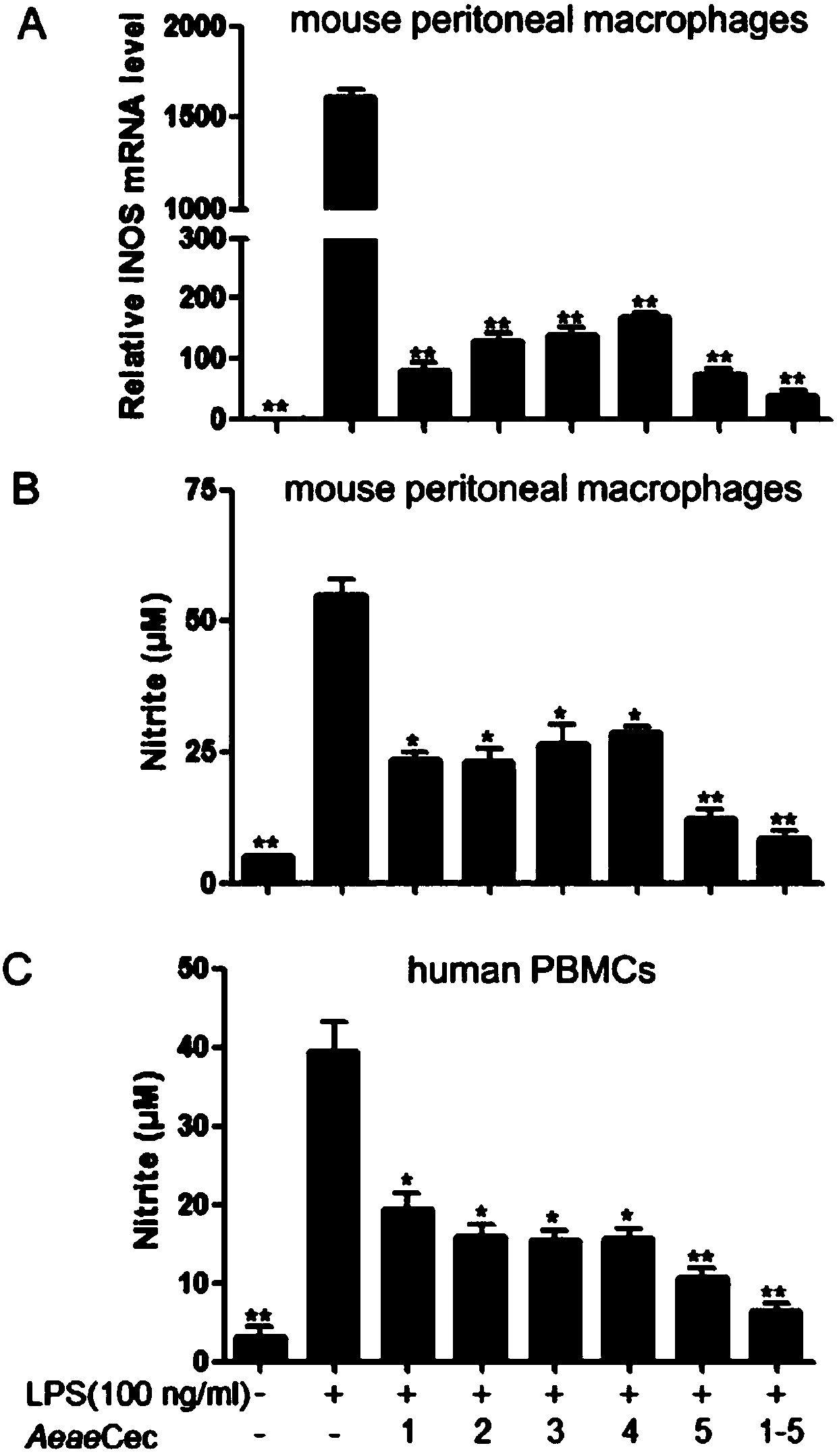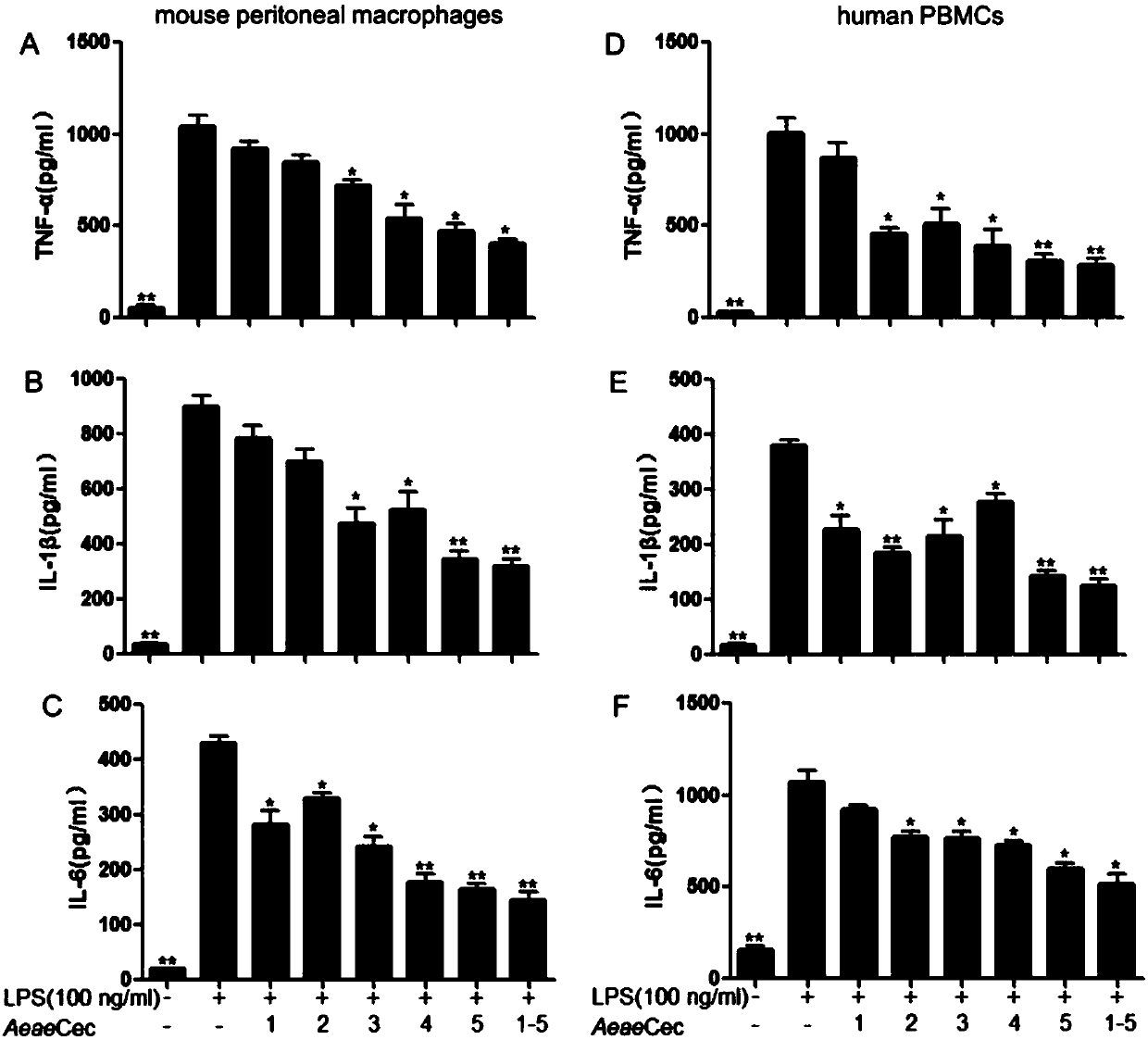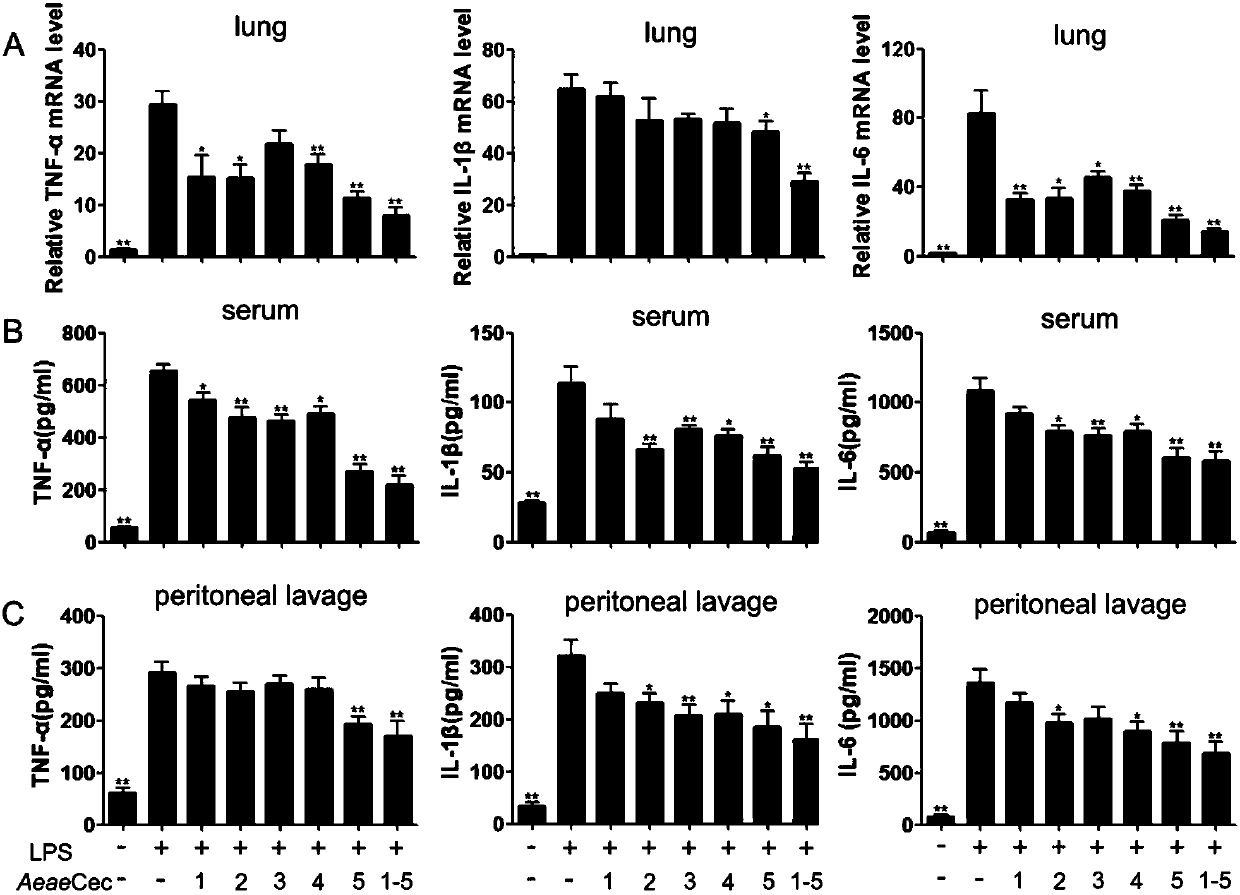Application of cecropin polypeptide as anti-inflammatory drug
An anti-inflammatory drug, cecropin technology, applied in the field of biomedicine, can solve problems such as retention, and achieve the effect of low synthesis cost, good application prospects, and small molecular weight
- Summary
- Abstract
- Description
- Claims
- Application Information
AI Technical Summary
Problems solved by technology
Method used
Image
Examples
Embodiment 1
[0046] Aedes aegypti natural immune peptide cecropin inhibits LPS-induced nitric oxide (NO) production in mouse peritoneal macrophages and human peripheral blood mononuclear cells (human PBMCs)
[0047] (1) Inhibit the transcription of inducible nitric oxide synthase (iNOS) in mouse peritoneal macrophages stimulated by LPS
[0048] iNOS is a synthetase necessary for NO production. First, the effect of five cecropins of Aedes aegypti on the transcription level of nitric oxide synthase was tested.
[0049] C57BL / 6 mouse peritoneal macrophages were plated in a 24-well cell culture plate (2.5×10 5 Cells / well), cultured with RMPI-1640 medium (purchased from Gbico, USA) supplemented with 2% fetal bovine serum, 100U / ml ampicillin and 100μg / ml streptomycin sulfate. After the cells adhere to the wall, such as figure 1 As noted, add 100ng / ml lipopolysaccharide (LPS, from Escherichia coli 0111:B4, purchased from Sigma) into the cells, and add 5μM AeaeCec1, AeaeCec2, AeaeCec3, AeaeCec4, AeaeCec5,...
Embodiment 2
[0058] Aedes aegypti natural immune peptide cecropin inhibits lipopolysaccharide (LPS)-induced mouse macrophages (mouseperitoneal macrophages) and human peripheral blood mononuclear cells (human PBMCs) pro-inflammatory cytokine production
[0059] Plate C57BL / 6 mouse peritoneal macrophages or human PBMCs in a 24-well cell culture plate (2.5×10 5 Cells / well), cultured in RMPI-1640 medium (purchased from Gbico, USA) supplemented with 2% fetal bovine serum, 100U / ml ampicillin and 100μg / ml streptomycin sulfate. After the cells adhere to the wall, the cells Add 100ng / ml lipopolysaccharide (LPS, from Escherichia coli 0111:B4, purchased from Sigma), and add 5μM AeaeCec1, AeaeCec2, AeaeCec3, AeaeCec4, AeaeCec5, and the experimental group for synergistic effect detection. AeaeCec1-5 (1 μM each). And set up a control group, add an equal volume of PBS. After a total of 6 hours of incubation, the cell culture supernatant was collected, and the cytokine tumor necrosis factor-α (TNF-α), inter...
Embodiment 3
[0064] Toxicity of Aedes aegypti natural immune polypeptide cecropin to mammalian cells
[0065] C57BL / 6 mouse peritoneal macrophages, human PBMCs and green monkey kidney cell line Vero E6 cells were plated in 96-well culture plates (2×10 4 Cells / well), cultured with RMPI-1640 medium (100μl / well, purchased from Gbico, USA) supplemented with 2% fetal bovine serum, 100U / ml ampicillin and 100μg / ml streptomycin sulfate, and wait for the cells to adhere to the wall After that, a series of peptides diluted in 2 times in serum-free RPMI-1640 medium were added. For 24 hours of co-cultivation, each well was added with cell proliferation and toxicity detection reagent CCK-8 (10μl / well, purchased from Beijing Watbison Technology Co., Ltd. Company), after 4 hours of incubation, detect the light absorption at 450nm, define the cell viability without added polypeptide as 100%, and calculate the cell viability after treatment with different concentrations of polypeptide.
[0066] The results show...
PUM
 Login to View More
Login to View More Abstract
Description
Claims
Application Information
 Login to View More
Login to View More - R&D
- Intellectual Property
- Life Sciences
- Materials
- Tech Scout
- Unparalleled Data Quality
- Higher Quality Content
- 60% Fewer Hallucinations
Browse by: Latest US Patents, China's latest patents, Technical Efficacy Thesaurus, Application Domain, Technology Topic, Popular Technical Reports.
© 2025 PatSnap. All rights reserved.Legal|Privacy policy|Modern Slavery Act Transparency Statement|Sitemap|About US| Contact US: help@patsnap.com



